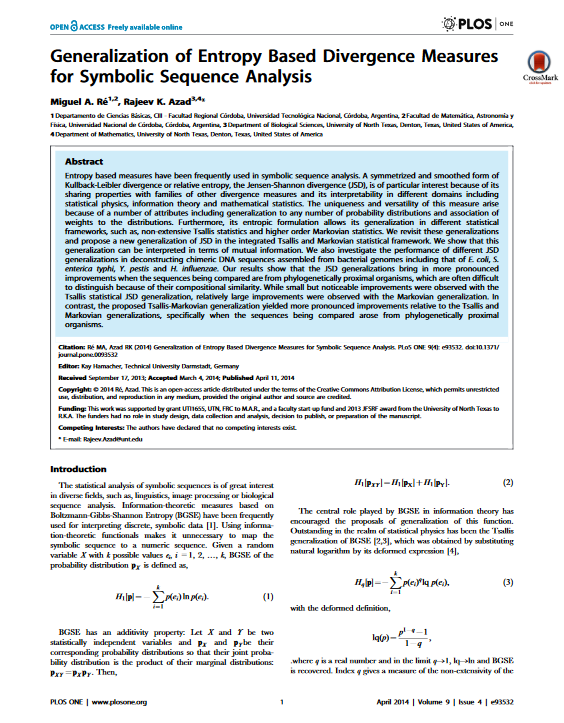Generalization of entropy based divergence measures for symbolic sequence analysis
Licencia: Creative Commons (by)
Autor(es): Ré, Miguel y Azad, Rajeev
Entropy based measures have been frequently used in symbolic sequence analysis. A symmetrized and smoothed form of Kullback-Leibler divergence or relative entropy, the Jensen-Shannon divergence (JSD), is of particular interest because of its sharing properties with families of other divergence measures and its interpretability in different domains including statistical physics, information theory and mathematical statistics. The uniqueness and versatility of this measure arise because of a number of attributes including generalization to any number of probability distributions and association of weights to the distributions. Furthermore, its entropic formulation allows its generalization in different statistical frameworks, such as, non-extensive Tsallis statistics and higher order Markovian statistics. We revisit these generalizations and propose a new generalization of JSD in the integrated Tsallis and Markovian statistical framework. We show that this generalization can be interpreted in terms of mutual information. We also investigate the performance of different JSD generalizations in deconstructing chimeric DNA sequences assembled from bacterial genomes including that of E. coli, S. enterica typhi, Y. pestis and H. influenzae. Our results show that the JSD generalizations bring in more pronounced improvements when the sequences being compared are from phylogenetically proximal organisms, which are often difficult to distinguish because of their compositional similarity. While small but noticeable improvements were observed with the Tsallis statistical JSD generalization, relatively large improvements were observed with the Markovian generalization.
[2014]
Compartir:
Una vez que el usuario haya visto al menos un documento, este fragmento será visible.


